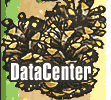Orange Center Green is the focus of the village of Orange Center, surrounded on all four sides by roadways. Orange Center Road (Conn. Route 152), on the east side, is a moderately heavily-traveled, two-lane road. The others, Meeting House Lane on the north, and Church Lane on the west and south, are narrower and much less traveled. The edge of the green is outlined with granite curbing. The only parking spot is in a small lot beside the Congregational Church, at the north end of the green. A gravel path runs along the east side of Orange Center Road, across from the green.
On all four sides of the green, buildings are regularly spaced and set a fairly uniform distance back from the roads. The vast majority of these are houses, built between about 1800 and 1950. All fall within the Colonial/Federal/Greek Revival/Colonial Revival stylistic family (one Italianate intruder having received a Colonial Revival remodeling earlier in this century). Three civic buildings join the houses on the green: the Congregational Church, the Orange Academy building, and the Orange Public Library. The church, built in 1810 by David Hoadley, is of frame construction with a brick wing. The Academy is a two-story building with a cupola and Stick-Style ornamentation. Beside it, the library is a one-and-a-half story, Colonial Revival building of red brick. Except for the library and one house, everything is painted white, giving the green's surroundings a strongly uniform appearance. Everything is neatly maintained.
Farther to the northeast on Orange Center Road, but still visible from the green, are the town hall and several related buildings. These are all brick buildings, one or two stories tall, of late Colonial Revival style. While different in appearance from the other buildings around the green (except the library), they do not detract from its character.
The Orange Center Green is a long rectangle approximately 400 feet long and 120 feet wide, fairly open in feeling. Medium-sized trees, mostly oaks with a couple maples, are regularly spaced along the north, west, and south sides. Telephone poles and wires run along the east side. At each corner except the southwest is a small landscaped clump, consisting of one or two dogwood trees, with some yews, azaleas and bulbs planted in a free-form, mulched bed. A plaque in the northwest clump says that these plantings were made by the Orange Garden Club in 1976. Wooden benches stand in the two northern clumps as well. In the center of the green a flagpole stands in the center of a square terrace, paved with flagstones. More bushes surround this terrace, and two evergreen trees stand to the north and south of it. The southern tree is probably used as a Christmas tree, judging from the presence of an electrical box beside it. Farther south of the flagpole are two granite monuments, each flanked by yew bushes. One is a boulder bearing a bronze plaque dedicated to the memory of veterans of the Revolutionary War, the War of 1812, the Civil War, the Spanish-American War, the World Wars, the Korean War and the Vietnam War. The other monument honors the members of the Orange Volunteer Fire Department. A white sign saying "Town of Orange, Founded 1822" stands about midway along the east side, next to three small dogwood trees.






![]()